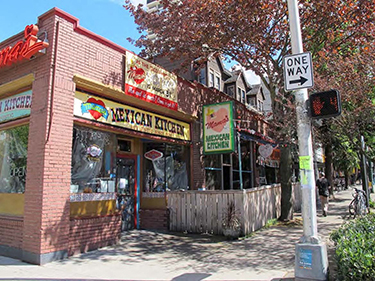|
Subscribe / Renew |
|
|
Contact Us |
|
| ► Subscribe to our Free Weekly Newsletter | |
| home | Welcome, sign in or click here to subscribe. | login |
Architecture & Engineering
| |
January 20, 2017
Board votes to make Mama's a city landmark
Seattle's Landmarks Preservation Board voted unanimously Wednesday to designate as a city landmark a building in Belltown that previously housed the popular Mama's Mexican Kitchen.
The vote was to designate the exterior of the 1924 building at 2234 Second Ave. The building has the same name as the restaurant.
The board said the building shows distinctive characteristics of an architectural style, period or construction method; and contributes to the identity of the neighborhood.
A landmark cannot be significantly altered without a permit from the board. It may be demolished only if the owner can demonstrate there is no reasonable economic use.
Minglian Realty LLC of Vancouver, B.C., has said it plans to start construction this year on an eight-story, 63-unit apartment building on the Mama's site. It is being designed by Studio19 Architects.
In August of last year, Lin Xu, a Minglian manager, said his firm planned to raze the Mama's building for the project, and had no “Plan B” if it was designated a landmark because it's such a small site.
Minglian purchased the building in 2015 for nearly $4.53 million, according to King County records. The site is 6,480 square feet.
Xu was not available for comment Thursday.
The landmark application, prepared by NK Architects, says Mama's Mexican Kitchen was one of the oldest Mexican restaurants in Seattle. It opened there in 1974 and recently closed, replaced by Mama's Cantina. Elliott Bay Crossfit is also in the building.
According to the application, George Wellington Stoddard designed the building, which is representative of the low-scale, commercial buildings developed in Seattle in the early part of the 20th century. Past uses included an auto repair shop and the Communist Party.
Stoddard was active in Seattle from the 1920s to the 1960s, according to NK. Works by Stoddard & Son, which he formed with his father, Lewis Malcolm Stoddard, include Park Court Apartments and Metropolitan Printing Press.
In the 1940s, George Stoddard was part of the team that designed public housing at Yesler Terrace.



